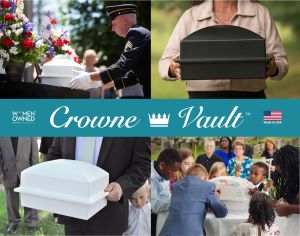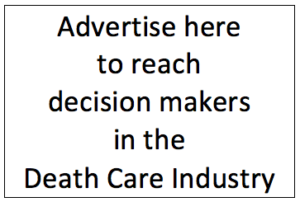Dilemma: The affluent consumer and traditional Death Care

On Tuesday morning I had to alter my running schedule because of rain showers. So, I took to our indoor treadmill to get my daily exercise and had a nice run while watching the Fox Business Stuart Varney morning show.
One of the short business news stories that came on was that they believed you would see McDonald’s stock “pop” a little on Tuesday because they were introducing meal items and pricing to draw the low-budget consumer in for “Back-to-School” meals. The hosts of the program also made a point to let viewers know that McDonald’s marketing to the “low-budget” clientele was very different from most products that seem to market to the more affluent audience with more disposable incomes.
I had also just read an article that morning about a potential decline of white collar workers and a potential gain of blue collar workers in the U.S. because of the expected reshoring of American manufacturing jobs and the expected increase of artificial intelligence in white-collar business use. That combination made me wonder about the traditional (casketed burial) markets that over the years have been overtaken by cremation choices by consumers.
I grew up in a small community in rural America and remember my father’s words when a new owner took ownership of the other funeral home in town. That owner seemed to be in the newspaper all the time and was quick to become an active member of the Chamber of Commerce. My dad made the comment to me at the time when I was in middle school and I still remember it to this day, “Let him wine and dine those people all he wants. We will be happy taking care of the farmers and blue collar workers and there is a lot more of them”.
Now, my dad was an “old shoe” if there ever was one. He would not know what a “Cesare Attolini brand” suit was, much less ever wear one. He once told me that he drove an old American Motors Rambler car because “it was all he needed”. Yet, he took care of any family that called our funeral home with incredible care, compassion, and credit — and most of our clients were the farm families and the blue-collar worker families that sometimes needed all of those attributes.
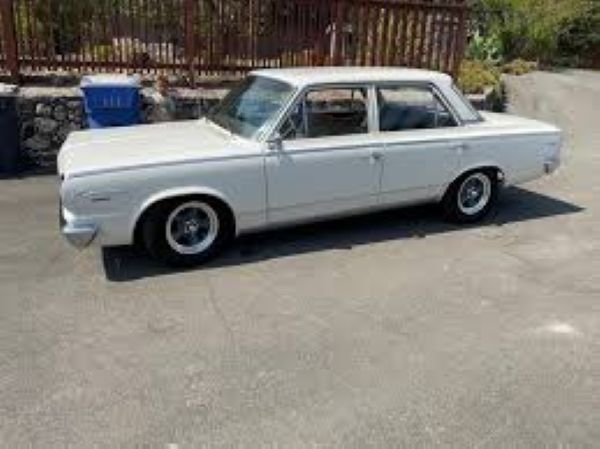
My dad’s 1966 “Basic White” four-door American Motors Rambler
I took his quotes and actions to heart and have always believed that “Farm families and blue-collar workers” were the backbone of traditional funeral service. Of course, in our community they were also the back-bone of the churches and school boards . . . . . . and they believed in the traditions and mores of traditional funeral services.
Here’s an interesting graphic (below) that shows the manufacturing losses in America since what I would call the “Globalization of Manufacturing”. Maybe it is just coincidental, but the dates of loss of these blue-collar workers somewhat corresponds with the percentage increases in cremation related services in America.
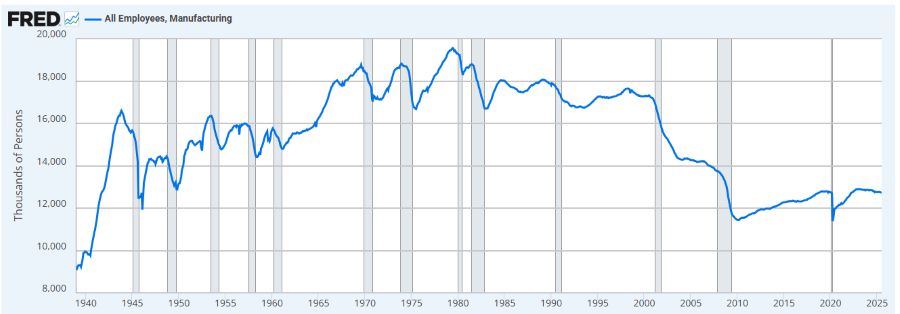
This next graphic (below) shows that America’s Middle Income (Blue-Collar) people have dropped from having an aggregate of 62% of the income in 1970 to only 43% of the income today. And, as you can see Upper Income Americans now control about 48% of all income — up from about 29% in 1970. And, the Lower Income tier has stayed relatively stable over the past 50 years.
So, my historic take is, the backbone of traditional funeral service was making, in relative terms, less money while the cost of traditional funeral services was going up. It should be no surprise that low-cost cremation demand also went up over those years. I don’t think it should come as any surprise that one traditional funeral home company that has catered to the “cost-conscious” traditional funeral consumer over the years, Newcomer Funeral Group, has seemingly done very well by doing so.
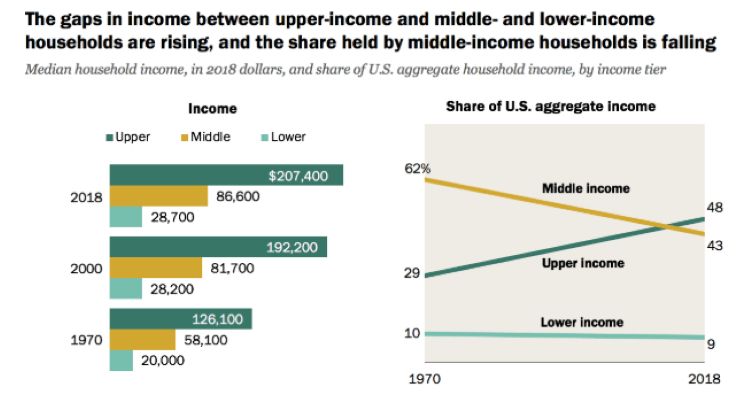
I was also moved during this exercise to find out what do companies appeal to when they “chase the affluent consumer” audience? I found this short article and lengthier white-paper from Mastercard titled “Reaching new heights: Understanding the nuances and potential of affluent consumers in a changing market”.

Tom Anderson
Funeral Director Daily
I didn’t read the white-paper but did notice one of the nuances of affluent consumers is that the affluent consumer likes “new and innovative products”. The article goes on to state “This influential audience presents unparalleled opportunities for brands ready to adapt and innovate.”
When I go back in history and look at the rise in cremation I would argue that cremation in America was “innovative” in the 1960’s and 1970’s which may be one reason it was adopted by the affluent early on and that the relative financial strength loss of the middle income in the years following (coupled with the increased prices of traditional funerals) both had something to do with the increased level of cremation over the past 4-5 decades.
While many traditional funeral homes fought cremation, there were some really innovative firms that saw the “cremation innovation” and went full-scale into the process. Many even changed their brand by taking out the words “funeral home” and inserting “cremation”. Over time, some of the firms that saw the wave and re-branded are some of the largest volume firms in the country today.
Thinking about the future — If these hypotheses are in any way somewhat correct one would suggest that a company with an innovative Death Care product, such as alkaline hydroysis or natural organic reduction should be looking for the “early adopters” among the affluent members of society.
With Mastercard’s theory that the affluent “like innovation” one would suggest that innovative Death Care companies, and this would include after-market cremation products like Better Place Forests and Parting Stone, would find the most success in affluent zip-code areas.
More news from the world of Death Care:
- San Francisco funeral home offer cremation by fire or water. Potrero View (CA)
- The funeral costs no one talks about. USA Today
- Fort Smith Board of Directors to discuss taking over cemeteries at Tuesday’s meeting. Northwest Arkansas Democrat Gazette (AR)
- Obituary: John “Jack” Rehkamp. Marshall Independent (MN)
- A.I. is writing obits now. KERA Think. Podcast and Transcript.
Enter your e-mail below to join the 3,199 others who receive Funeral Director Daily articles daily
“A servant’s attitude guided by Christ leads to a significant life”









